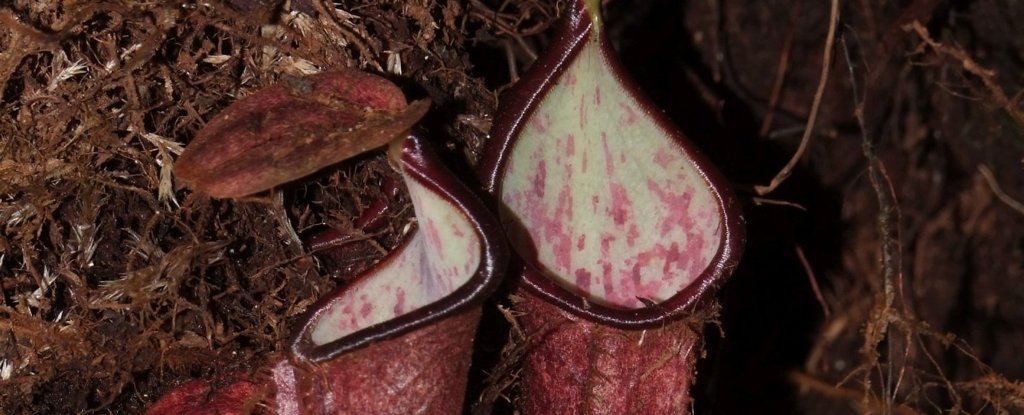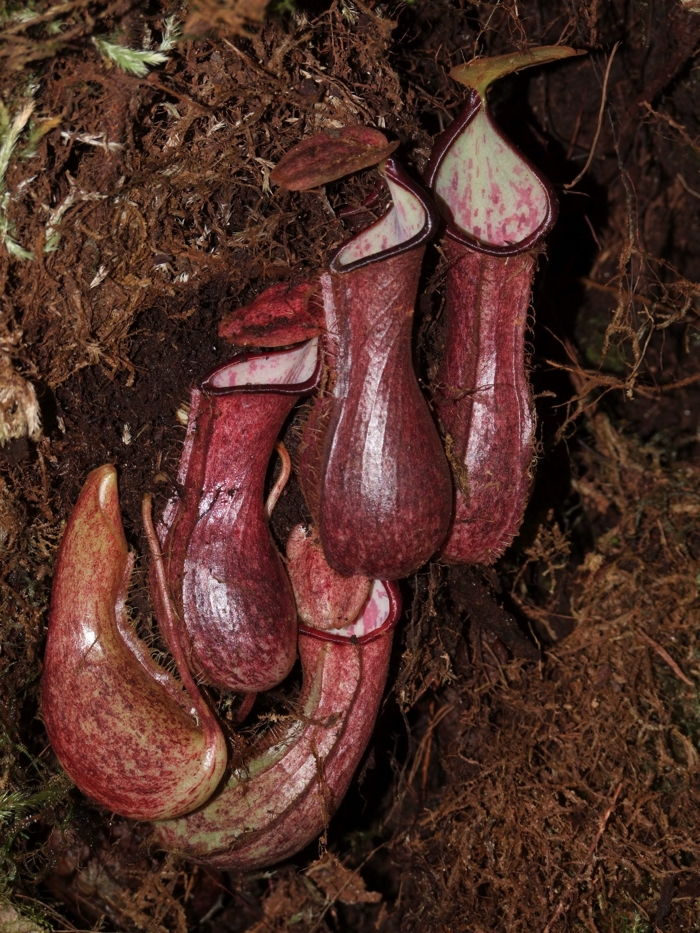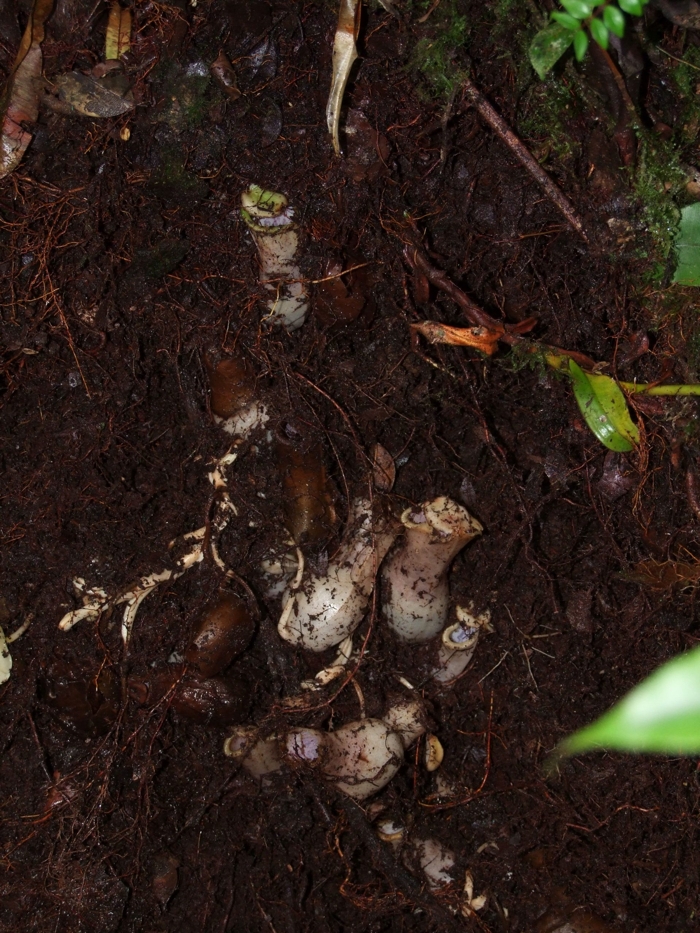
Posted on 06/30/2022 6:16:30 AM PDT by Red Badger

Underground pitchers. (Martin Dančák)
We often think of plants as sedate, tranquil organisms that can't help but keep to themselves. But not all plants are harmless wallflowers.
Carnivorous plants, as the name suggests, eat prey – mostly bugs, but also small animals, and other nutrient-rich matter.
While the whole idea seems vaguely nightmarish at first, these "ecologically unique" plants need our protection just like any other threatened organism; and we're still finding examples of these carnivores we've never even noticed before.
In the latest such discovery, scientists have now reported the identification of a previously unknown species of carnivorous plant, found on the island of Borneo in the Indonesian province of North Kalimantan.
The newly named species, Nepenthes pudica, is a kind of pitcher plant, but it consumes its prey in a way botanists have not recorded before.

A buried shoot with underground pitchers. (Martin Dančák)
"We found a pitcher plant which differs markedly from all the other known species," says botanist Martin Dančák of Palacký University Olomouc in the Czech Republic.
What makes N. pudica different from its carnivorous counterparts is where and how it lays its pitcher-shaped trap for its unsuspecting victims.
Ordinarily, pitcher plants produce these hollow, cupped tubes above ground, either at the soil surface, or in trees, with the receptacle's slippery inner surface making it difficult for any insects who wander in to climb back out again.
Once trapped at the bottom of the cavity, the insects drown and dissolve in a well of digestive juices, kind of like Boba Fett stuck inside the almighty Sarlacc (or so we used to presume).
N. pudica doesn't completely reinvent the wheel for pitcher plants, but it has changed the scenery somewhat.
On a field expedition in North Kalimantan in 2012, researchers noticed Nepenthes plants that strangely didn't seem to have any pitchers, and also observed a "deformed pitcher protruding from the soil".
Subsequent investigations – involving pulling up a layer of moss covering the ground – revealed numerous pitchers hidden in the underground soil, coming off shoots grown into the ground, as if to specifically target bugs that dwell inside the dirt, rather than on top of it.

UndergroundPitcherPlants2 A bunch of pitchers buried in the soil. (Martin Dančák)
"This species places its up-to–11-cm-long [4.3-inch] pitchers underground, where they are formed in cavities or directly in the soil and trap animals living underground, usually ants, mites, and beetles", Dančák says.
While other carnivorous plants in different genera have been known to lay traps underground, this is the first time a species with a pitfall-like trap has been found to do the same. In all, the team found and examined 17 such N. pudica, many of whom showed signs of prey being digested inside them.
Funnily enough, for a plant predator that lays its trap underground, N. pudica otherwise lives the high life, discovered in a mountainous ridge-top region at an elevation of about 1,100–1,300 meters [about 3,600–4,300 ft] above sea level.
As it happens, the researchers think the conditions at altitude could be a factor behind why this partly subterranean pitcher plant is so inclined.
"We hypothesize that underground cavities have more stable environmental conditions, including humidity, and there is presumably also more potential prey during dry periods," says co-author of the study Michal Golos, a plant biomechanics researcher at the University of Bristol in the UK, and a lifelong pitcher plant enthusiast, devoted to collecting and studying the oddities since childhood.
Everybody gets trapped by something.
The findings are reported in PhytoKeys.
Shades of “Tremors”
Reminds me of the deep state
.
“Feed me” (little shop of horrors I think was the movie)
Triffids? Get out the sea water sprayers quick!
“Feed me, Seymour!”
This is where I stopped reading...
They are in Borneo, so no problem!.............
Maybe, knowing exactly where these are would help.
Mount Apad Runan is even higher and appears to be a relatively soggy and humid place today. Given where most Nepenthes grow today I do understand why he might think it was to increase moisture availability.
Snake pelvises and whale femurs. Not everything we see today is an adaptation to present needs.
Not much elevation is needed for temperatures to drop precipitously. While the area is safe from frost today the higher elevation areas get comparatively cool during the winter nights. Succulents generally do poorly in cold places. Has this species been around for a while and may this be an adaptation to escape frost during the ice ages? It wouldnt take much soil to protect a plant and its roots, and in this case water filled pitchers, in a marginal environment.
If it works well enough then there would be no pressure to switch back to the more standard form.
Borneo................
Pictures could use something of a known size to provide a clue to as to their potential prey - mite or moose?
“Funnily enough” ??
Adverbing.....................
Future human space travelers will need to consider the possibility of simlar types of biological life but in larger sizes and scale than seen on earth. No sarcasm, just crystal ball gazing LOL.
maybe it can catch PeLOUSy and HilLIARy there?
Getting serious Bat Creatures vide from ‘The Beastmaster’ movie
And what about Borneo? I cited Mount Apad Runan so you know that I know that the article states Borneo.
You may have heard that Mobile, Alabama and Yuma, Arizona are in the same country on the same contiguous landmass yet have somewhat different environments.
This ecologically unique species lives “in a mountainous ridge-top region at an elevation of about 1,100–1,300 meters” but that doesnt tell us which or where. Is this a foothill of Apad Runan? Is this further toward the eastern shore or toward the Southern part of North Kalimantan making it the central part of the island? Small changes like that in location had have a major effect on the local environment.
Michal Golos states “We hypothesize that underground cavities have more stable environmental conditions, including humidity, and there is presumably also more potential prey during dry periods,” which, without location data, makes no sense only on face value. Is there actually any place in Borneo, however small, that an relatively arid environment would be of concern? They get from 4-18 inches of precipitation per month, in my state known for agriculture (that has multiple types of pitcher plants) we get 1-6 inches per month yet in most local areas too much water is more likely a problem than not enough. Then again most Nepenthes grow in swampy bogs not mountain ridges. So where does such a ridge exist in Borneo?
Not knowing which ridge these grow on stops us from further analyzing the hypothesis leaving us only to accept or reject his hypothesis which isnt much of a discussion.
How do they know that THIS ONE isn’t the ORIGINAL, and ALL THE OTHERS EVOLVED TO FIT THEIR ENVIRONMENTS?..............
Disclaimer: Opinions posted on Free Republic are those of the individual posters and do not necessarily represent the opinion of Free Republic or its management. All materials posted herein are protected by copyright law and the exemption for fair use of copyrighted works.